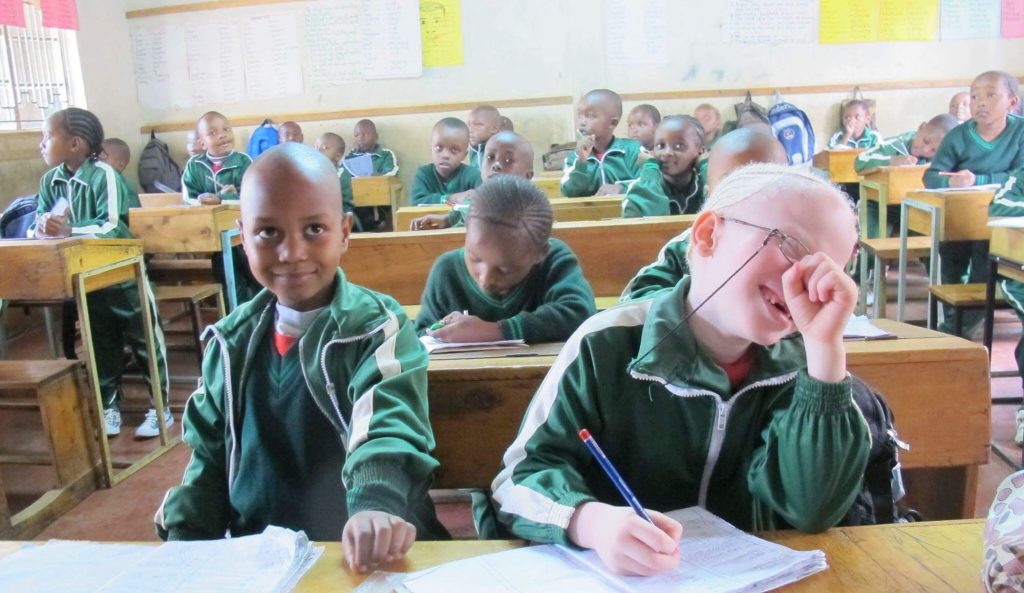b) Education Rescue

This project aims at ensuring early intervention for learners with albinism and provision of both financial and non-financial resources for person with albinism to enable them access quality education in main stream Access to any or quality education for CWA is constrained by the negative social perceptions of albinism. While some communities or families do not take CWA to school, those who attend school do so in an environment that is completely oblivious of their special learning needs. The learning environment is hostile, with the CWA subjected to taunts and insults by their peers. Teachers are not sensitized and trained to handle their needs so they are often insensitive and dismissive of the abilities of CWA.
Children with albinism are usually enrolled in special schools, such as schools for the blind, even in cases where they are not legally blind. At these schools, some of them are taught braille and are therefore not enhancing the use of their total or residual vision. Many persons with albinism or parents of CWA still prefer to attend these schools for various reasons from security to acceptance as well as understanding from teachers and students alike. These are elements which are – for the most part – not present in the mainstream schools even though Kenya has adopted an inclusive education policy. Despite the free primary education in Kenya, still there is a boarding fee at special schools, amounting to 26.000 Kenyan Shillings (260 US Dollars) per year. An overwhelming majority of persons with albinism are poor and some parents of CWA are extremely poor and therefore unable to attend these schools. Although there is a Cash Transfer Program for financially supporting persons with severe disability who are financially challenged, the program is generally not applied to persons with albinism even though the criteria for qualifying is open and includes persons with disabilities who report living in danger. Without the requisite support, many with albinism are forced to go to mainstream schools where there is no reasonable accommodation and sometimes (severe) bullying occurs.
Those CWA who attend regular learning institutions are unable to keep up with the rest of the class due to the lack of understanding by teachers, and unable to cope with national examinations which do not cater for their special needs- being set either in Braille for the blind or in normal sized print for those with normal vision. The ‘in-between’ situation of CWA means that their needs are not addressed within the current education system.
